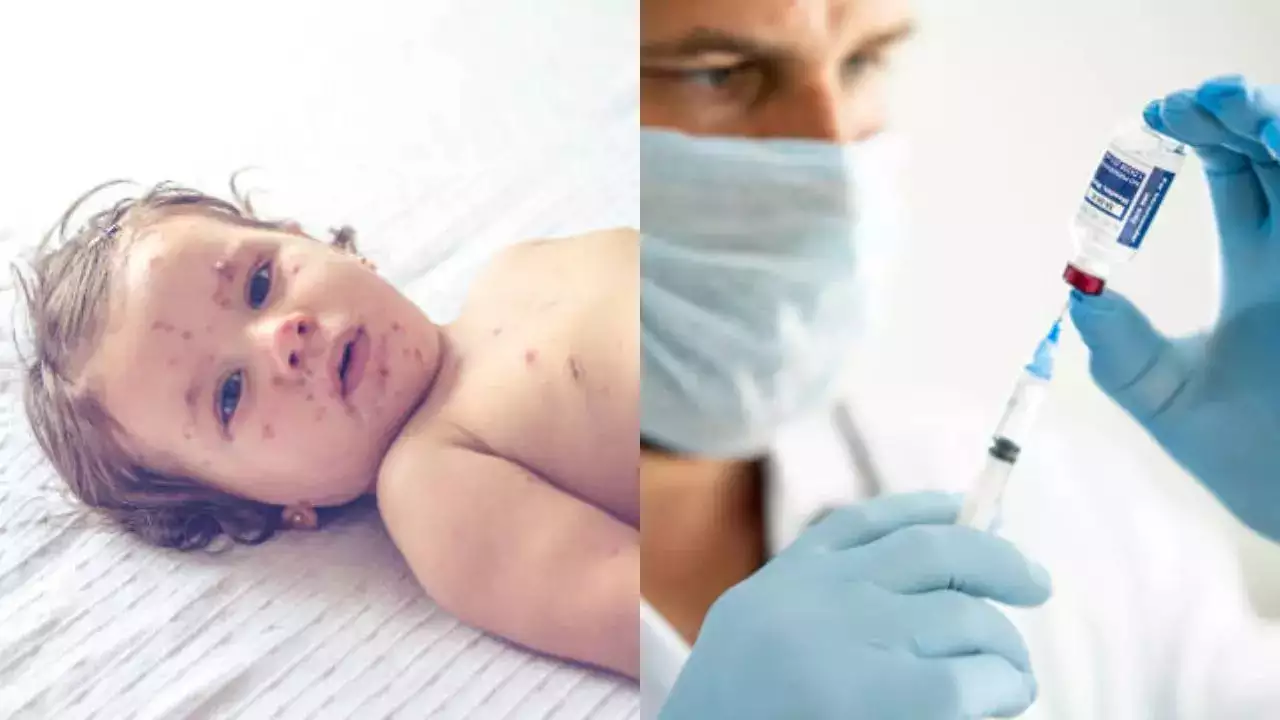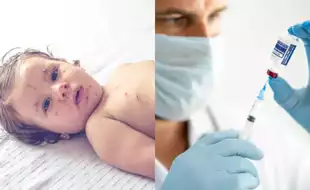
According to the health agencies, more than 22 million children did not receive a first dose of the two-dose measles vaccine in 2023
Poor vaccine coverage has fueled a 20 per cent spike in measles cases across the world, with 10.3 million people struck by the preventable illness in 2023, the World Health Organization said in a joint statement with the US Centers for Disease Control and Prevention. "Inadequate immunization coverage globally is driving the surge in cases," of what was once a common childhood disease, said the health agency.
"The number of measles infections is rising around the globe, endangering lives and health," CDC Director Dr. Mandy Cohen said in the statement. "The measles vaccine is our best protection against the virus, and we must continue to invest in efforts to increase access."
"Measles vaccine has saved more lives than any other vaccine in the past 50 years," Dr. Tedros Adhanom Ghebreyesus, WHO Director-General said in the statement. "To save even more lives and stop this deadly virus from harming the most vulnerable, we must invest in immunization for every person, no matter where they live."
What do the figures say?
According to the health agencies, more than 22 million children did not receive a first dose of the two-dose measles vaccine in 2023. Globally approximately 83 per cent of children received a first dose of the vaccine last year, and 74 per cent received a second dose.
Health officials recommend vaccination coverage of at least 95 per cent in communities to prevent outbreaks. An infected person can spread the highly contagious disease to up to 90 per cent of people close to them if they are not immune.
WHO said almost half of all outbreaks of measles occurred in the African region. In the United States, measles vaccination rates among kindergartners have missed the federal target for four years in a row and fell to 92.7 per cent coverage in 2023, according to CDC data.
In the United States, 277 measles cases were reported in 31 states and Washington, D.C., in 2024, with 16 outbreaks, according to the CDC. Last year, only four outbreaks were reported in the United States.
What is measles?
Measles or rubeola is a highly contagious viral disease that causes fever and a rash. It spreads through the air when a person with measles talks, coughs, or sneezes. There is no medical treatment for measles and doctors say you have to let the virus run its course. The best protection against measles is to receive the measles vaccine.
Since the introduction of a vaccine, measles hasn’t been nearly as common as before the vaccine was available. However, measles outbreaks have happened recently as a result of the United States' declining vaccination rates. Vaccination rates are also not high in many parts of the world. This means you can get measles when you travel internationally. Anyone who hasn’t been vaccinated against measles is at risk of getting it.
Signs and symptoms of measles
According to experts, signs and symptoms typically develop about eight to 12 days after you get exposed to someone with measles. However, there have been times that it takes up to 21 days to develop symptoms after exposure. The most common measles symptoms include:
- High fever
- Tiredness and fatigue
- A barky cough
- Red bloodshot eyes
- Runny nose
- Sore throat
- White spots in your mouth
- Muscle pain
A few days after these symptoms begin, you may develop a red, blotchy rash that spreads from your face to the rest of your body. The rash itself lasts about seven to 10 days.
Get Latest News Live on Times Now along with Breaking News and Top Headlines from Health and around the world.

